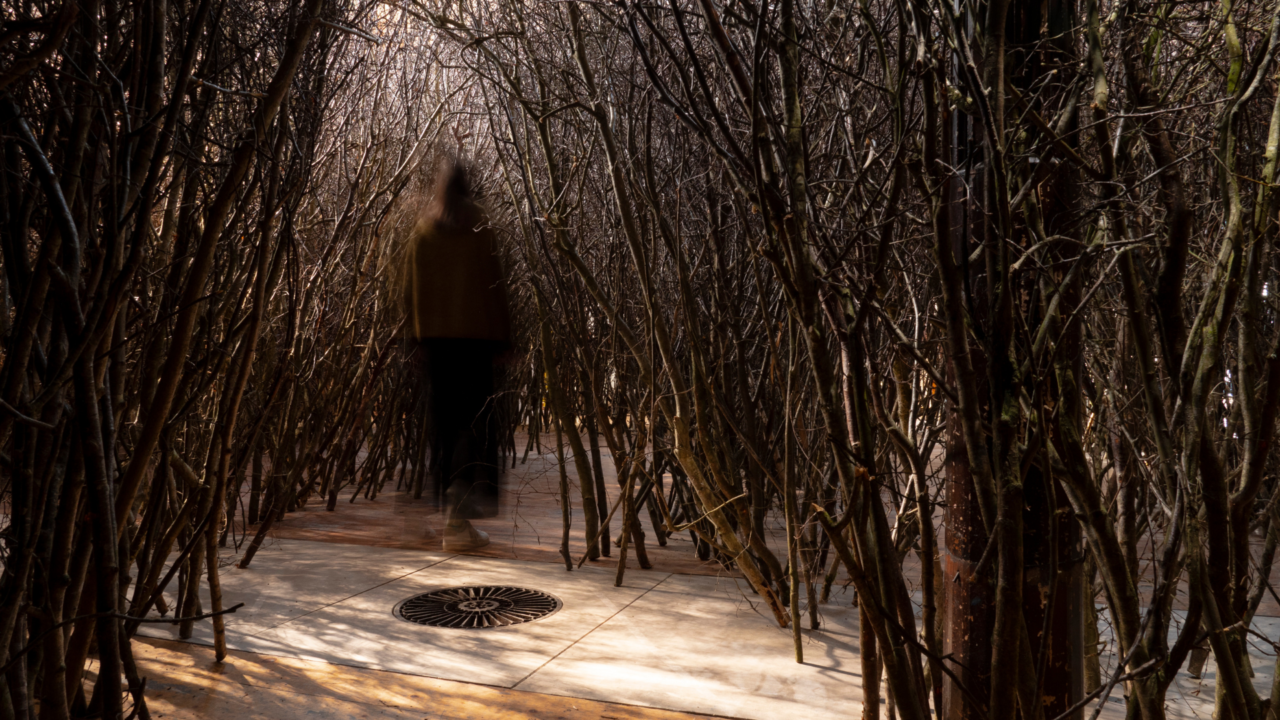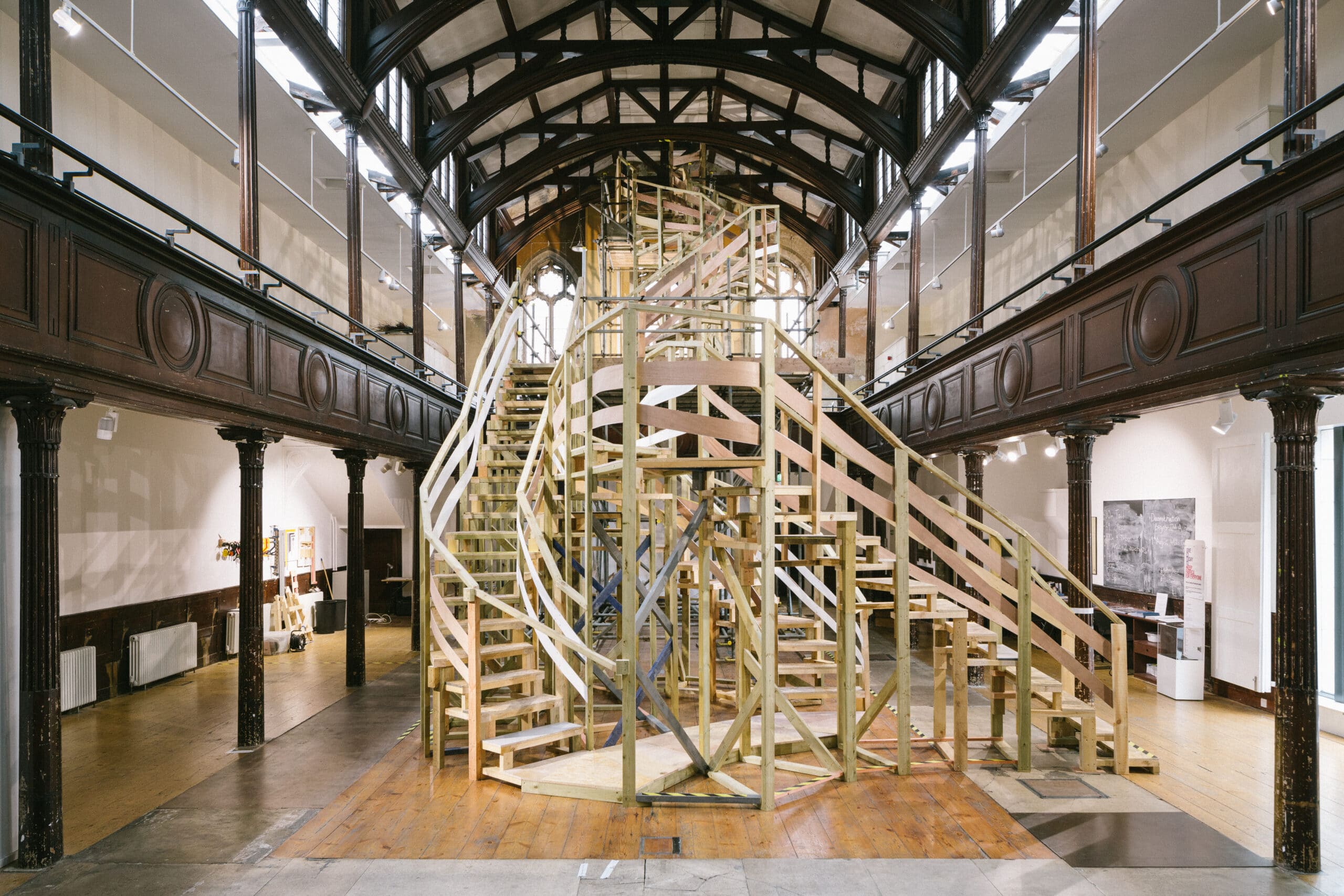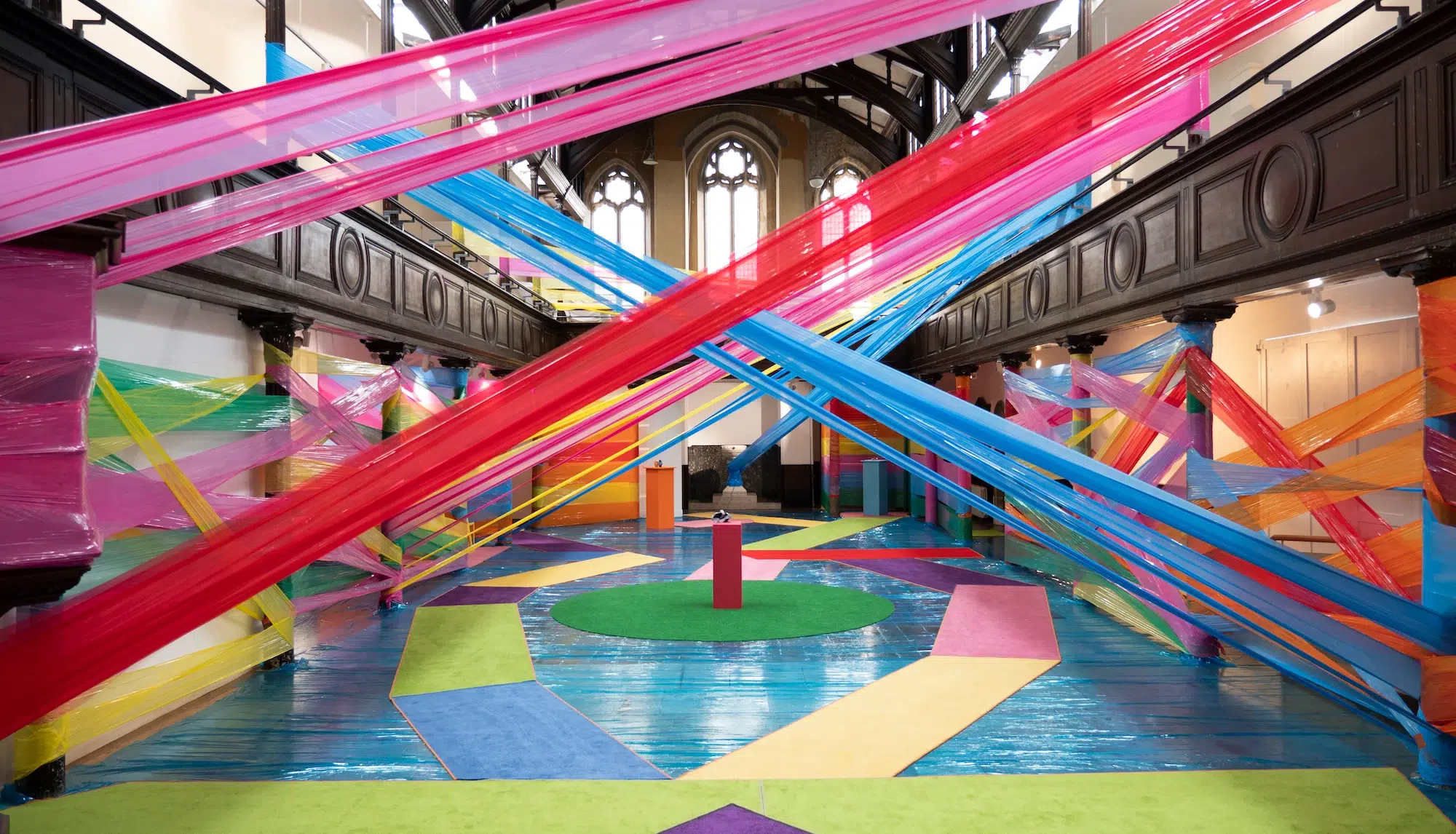- Posted on April 5th, 2022
Fabrica – A human relationship with the natural world

Origin of environmental journey
In 2014, we created On Balance, an exhibition of works by Jacob Dahlgren. This involved a sculpture made from 713 polished bathroom scales, which had been mass produced in China. Purchasing these really brought home the ethical and environmental impact of producing the exhibition related to working conditions and emissions from transport. We decided that our visitors should know about their provenance via a text information panel and a panel event, All Costs Considered. We made sure all the scales were relocated to places they would find a use, predominantly to sheltered accommodation with older residents.
Since 2014 we have made a commitment to reflect our human relationship to the natural world each year in our artistic programme. All staff are knowledgeable on the situation around the climate crisis and why it is important to reduce our carbon footprint. Environmental sustainability also feeds into our visitors and the dialogues they wish to talk about, which informs our programme.
We are in a constant process of re-evaluating our activities: from making sure that any cups we use for events are biodegradable or reusable, printing fewer flyers in favour of e-marketing and ensuring that the products we sell in our shop and cafe are locally sourced and use biodegradable and sustainable materials.
Changes to exhibitions
Perhaps the most significant change over the years is how we plan and produce our exhibition programme. In 2020, we increased the capacity of the Production Assistant from one to three days per week which has enabled us to address the time it takes to purchase, repurpose and recycle materials and plan exhibition production much further ahead.
Fabrica presents newly commissioned or completely reconfigured existing artworks, which merge with the unique architecture of our exhibition space to create highly immersive exhibition experiences for visitors. Exhibitions at Fabrica often involve shipping large quantities of materials to create the artwork or building walls.
Now, we’ll keep wall panels for exhibitions on site longer than we used to, which can present us with storage problems, but the environmental and financial benefits of recycling outweigh the inconvenience of the storage issue. We regularly work with a local company Brighton Staging Co, who help us implement this system by creating additional storage on site where necessary, and helping us recycle the wood when we can’t use it anymore.
Reducing carbon emissions in the process of making an exhibition can often correlate with reduced costs, whether that be using reclaimed wood for an exhibition, reducing our energy consumption or not needing to pay for waste removal.
We also tap our wider network of partners and freelancers to see if materials can be sourced through them, which usually reduces the costs and environmental impact of transportation, and feeds the local economy. This wide network of people and organisations also provides a marketplace to advertise materials that we no longer require.
The artists we work with want their practice to be environmentally sustainable and tend to work with an awareness about minimising waste and using non-hazardous materials and processes. This shift in knowledge and interest about human impact on the environment has affected the ways artists conceive the production of their work.
For example, artist Jo Lathwood, who we worked with in 2018, insisted that her artwork would be created from reclaimed wood. We also teamed up with The Wood Store, a local timber yard selling recycled and reclaimed wood to source the materials for the project, but then also sold it back to them after the exhibition finished.

Importance of partnerships with local companies
Each exhibition throws up its own unique set of requirements so we always think about whether there are local organisations or businesses that we may be able to materials from, and recycle to, as part of the production planning.
Working with local companies means there is a much better dialogue about the origins of a material and often they have good workable suggestions about how material can be repurposed after we’ve used it. And also how the material will be recycled or repurposed afterwards, or looking for eco-friendly alternatives or being really creative about how we can pass the material onto others.
2020 exhibition
In 2020, artists Walter & Zoniel created A Simple Act of Wonder for which they used brightly-coloured plastic film wrap to create their installation at Fabrica. We found a company, Kingfisher Packaging, that sells a version of the material that is using polymers that are widely recycled around the world.
Also, at the end of the exhibition the artists took it down in a way it can be reused for future artwork – becoming part of their future materials store. Other materials they used such as the colourful carpet were also re-purposed by the artists and a huge outdoor drawing painted by Walter & Zoniel on a large grassed area in a suburb of the city, was made using non-hazardous paint and was biodegradable, slowly disappearing as the grass grew.

Motivation for environmental action
Funding agreements and government policies help motivate how as an organisation we can achieve net zero emissions and shape the parameters and timelines in which as an organisation we can look at achieving this. As an Arts Council England National Portfolio Organisation, we have had access to Julie’s Bicycle for some time which has given us the tools to measure our impact and the impetus to do better each year.
Fabrica became a partner in the Living Coast (Brighton Hove & Lewes Downs Unesco Biosphere reserve) in 2012, and this has been fundamental to the changes in our organisation as well as giving a role to cultural organisations in the city in highlighting our local environmental assets – the benefits they offer and the threats they face.
Header image credit: Tom Thistlethwaite
